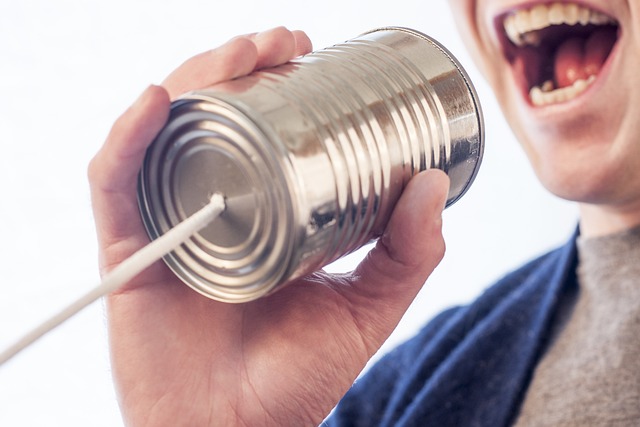When and How to Safely Use Waterpik After Wisdom Teeth Removal
Are you one of the brave souls who recently bid farewell to their pesky wisdom teeth? If so, congratulations on making it through the journey! Now that you’ve triumphed over the extraction process, it’s time to focus on the healing phase. With this in mind, we’re here to shed some light on a useful post-surgery tool: the Waterpik. Wondering when and how to incorporate this handy device into your oral care routine after wisdom teeth removal? We’ve got you covered! In this informative article, we’ll guide you through all the essential details and friendly advice to ensure a safe and optimal Waterpik experience during your recovery period. Let’s dive in and discover the secrets to maintaining a healthy, happy mouth post-surgery!
1. Understanding the Importance of Oral Care After Wisdom Teeth Removal
After undergoing a wisdom teeth removal procedure, it’s crucial to understand the significance of oral care to ensure a smooth recovery process. Not only will proper oral care practices minimize discomfort and swelling, but they will also help prevent potential complications such as infection or dry socket. To aid in your post-wisdom teeth removal journey, here are some key tips to keep in mind:
Tips for Oral Care After Wisdom Teeth Removal:
- Gentle rinsing: For the first 24 hours, avoid rinsing your mouth vigorously, as it may disrupt the initial blood clot formation. After this period, rinse your mouth gently with saltwater (1/2 teaspoon of salt dissolved in 8 ounces of warm water) multiple times a day to keep the surgical area clean and reduce bacteria.
- Regular brushing: Continue brushing your teeth, but be cautious when brushing near the surgical site. Use a soft-bristled toothbrush and brush gently to avoid any irritation. It’s advisable to avoid toothpaste with strong flavors or ingredients that may cause discomfort.
- Applying ice packs: Ice packs can be applied to the outside of your mouth for the first 48 hours after surgery to help reduce swelling. Apply the ice packs in 15-minute intervals with breaks in between.
Maintaining proper oral care after wisdom teeth removal is essential for a smooth healing process. By following these tips, you’ll be well on your way to a comfortable recovery and restored oral health. If you have any concerns or experience unusual symptoms, always reach out to your dentist or oral surgeon for guidance and assistance.

2. Introducing Waterpik: A Gentle and Effective Oral Care Tool
When it comes to maintaining optimal oral health, finding the right tools can make all the difference. That’s where Waterpik comes in. Waterpik has revolutionized the way we take care of our teeth and gums, offering a gentle and effective solution that goes beyond traditional brushing and flossing.
So, what sets Waterpik apart from other oral care tools? Here are a few reasons why it’s a game-changer:
- Water Flossing: Unlike traditional flossing, Waterpik uses a pulsating stream of water to remove plaque and debris from between your teeth and below the gumline. It’s a gentle yet powerful way to maintain a cleaner and healthier mouth.
- Customizable Pressure Settings: With Waterpik, you have control. You can adjust the water pressure to your comfort level, making it suitable for individuals with sensitive gums or dental work.
- Versatility: Waterpik is not just for flossing. It also comes with various attachments, allowing you to clean braces, implants, bridges, and even massage your gums for improved circulation.
Discover the difference that Waterpik can make in your oral care routine. With its gentle yet effective approach, customizable settings, and versatility, achieving a brighter smile and healthier gums has never been easier!

3. Timing is Everything: When to Begin Using Waterpik after Wisdom Teeth Removal
After getting your wisdom teeth removed, it’s important to take care of your mouth to ensure proper healing. One question that often comes up is when to start using a Waterpik for oral hygiene. Here’s a breakdown of when it’s safe and recommended to begin using your Waterpik post-wisdom teeth removal:
1. Consult your dentist: Before incorporating a Waterpik into your oral care routine, it’s crucial to consult with your dentist. They will evaluate your surgical site and provide personalized recommendations based on your specific case.
2. Wait for the right time: While it’s natural to want to resume your regular oral hygiene routine as soon as possible, it’s important to give your mouth time to heal. Typically, it’s best to wait until your dentist has given you the go-ahead, ensuring that your surgical site has closed up adequately and any stitches have dissolved or been removed.

4. Step-by-Step: How to Safely Incorporate Waterpik into Post-Surgery Oral Care Routine
Incorporating a Waterpik into your post-surgery oral care routine can help promote healing while keeping your mouth clean and free from bacteria. Follow these simple steps to safely incorporate this effective tool into your daily routine:
1. Consult with your dentist or oral surgeon: Before incorporating a Waterpik into your post-surgery oral care routine, it is crucial to seek guidance from your dental professional. They will be able to advise you on the appropriate water pressure and settings to ensure gentle yet effective cleansing of your mouth without causing any discomfort or damage during the healing process.
2. Choose the appropriate tip: Waterpiks come with various interchangeable tips, each designed for specific oral cleaning needs. After consulting with your dentist, select a tip that is suitable for post-surgery care. Soft or sensitive tips are often recommended to provide gentle cleaning, particularly around surgical sites, minimizing irritation or discomfort.

5. Gentle Jets and Adjusting Water Pressure: Tips for Safe Waterpik Usage
In order to ensure safe and effective usage of your Waterpik, it’s important to understand the various settings and features available. Here are some valuable tips on using gentle jets and adjusting water pressure:
Gentle Jets:
- Start by selecting the appropriate tip for your needs. The standard jet tip is great for general use, while the orthodontic tip is ideal for those with braces or orthodontic appliances.
- Hold the tip at a 90-degree angle to your gumline for optimal cleaning. Move the tip along the gumline and between each tooth for a thorough and gentle clean.
- Take care to avoid aiming the jet directly at your gums as this can cause discomfort or irritation. Instead, aim the water flow towards the areas in between your teeth.
- For extra gentleness, adjust the pressure setting to the lowest possible level. This helps prevent any sensitivity or discomfort, especially if you’re new to Waterpik usage.
Adjusting Water Pressure:
- Experiment with different pressure settings to find the one that works best for you. Remember, higher pressure is not necessarily better as it can increase the risk of gum irritation.
- If you experience discomfort or find the pressure too strong, gradually decrease the water pressure until you find a comfortable level.
- Keep in mind that certain areas in your mouth may require higher pressure, while others may need a lower pressure. Adjust the settings accordingly to ensure a safe and effective clean.
- If you’re unsure about which pressure setting to use, consult with your dentist or oral hygienist for personalized recommendations based on your oral health.
6. Navigating Sensitive Areas: Targeted Waterpik Techniques for Post-Extraction Healing
After undergoing a tooth extraction, it’s essential to take extra care of the sensitive areas in your mouth to promote proper healing. With targeted Waterpik techniques, you can effectively navigate these sensitive areas and ensure a smooth recovery. Here are some tips and tricks to help you get the most out of your Waterpik for post-extraction healing:
1. Adjust the Water Pressure: Start by setting the water pressure of your Waterpik to a lower setting. This gentle flow will prevent any discomfort or irritation in the sensitive areas. Gradually increase the pressure as the healing progresses, but always make sure it remains comfortable for you.
2. Use a Soft Tip: To avoid any harm to the extraction site, opt for a soft tip attachment on your Waterpik. This will provide a gentle and thorough cleansing without causing any damage. Remember to replace the tip regularly to maintain optimal cleanliness and hygiene throughout your healing process.
7. Keep it Clean: Cleaning and Maintaining Your Waterpik for Optimal Hygiene
Properly cleaning and maintaining your Waterpik is essential to ensure optimal hygiene and keep it working efficiently. Here are some tips to help you keep your Waterpik in top condition:
1. Rinse after use: After each use, make sure to thoroughly rinse your Waterpik with warm water. This helps remove any leftover debris or bacteria from the device and prevents buildup.
2. Use a mixture of water and vinegar: Regularly clean the water reservoir by filling it with a mixture of equal parts water and vinegar. Let it sit for about 15 minutes, then thoroughly rinse it with warm water. This helps remove any mineral deposits or mold that may accumulate over time.
3. Replace the nozzle periodically: It is recommended to replace the Waterpik nozzle every three to six months, or sooner if you notice any signs of wear or damage. This ensures a clean and efficient water flow for a refreshing oral care experience.
4. Store in a dry area: After each use, make sure your Waterpik is completely dry before storing it. This helps prevent the growth of mold or bacteria in between uses. Store it in a clean, dry area to maintain its hygiene.
8. Beyond the Basics: Supplementary Oral Care Practices to Complement Waterpik Usage
Now that you have mastered the basics of using your Waterpik, it’s time to explore some supplementary oral care practices that can work wonders when combined with regular usage. These practices will help you achieve an even cleaner and healthier mouth, giving you an extra boost of confidence in your smile.
1. Tongue scraping: Did you know that your tongue can harbor bacteria and contribute to bad breath? Invest in a tongue scraper to remove debris and bacteria from the surface of your tongue. By doing so, you can improve your breath and prevent the buildup of harmful bacteria.
2. Mouthwash rinse: Consider adding a mouthwash rinse to your oral care routine for an extra layer of protection against plaque and gum disease. Look for a mouthwash that is alcohol-free and contains antibacterial properties. Swish the mouthwash around your mouth for 30 seconds after you have finished using your Waterpik to ensure that you reach all areas of your mouth.
9. Signs to Watch Out For: When to Seek Professional Dental Advice Amidst Waterpik Usage
Using a Waterpik for your oral hygiene routine is a great way to remove plaque and keep your gums healthy. However, it’s important to keep an eye out for any signs that may indicate the need to seek professional dental advice. Here are some common indicators that you should be aware of:
- Excessive Bleeding: While a little bleeding is normal when you first start using a Waterpik, persistent or excessive bleeding after several weeks may indicate an underlying issue. It’s crucial to consult a dental professional to determine the cause of the bleeding.
- Increased Sensitivity: If you notice heightened sensitivity to hot or cold foods or beverages after using a Waterpik, it could be a sign of gum recession or enamel erosion. Seeking professional advice will help identify the problem and prevent further damage.
- Inflammation or Pain: While mild irritation is common during the adjustment period when using a Waterpik, persistent inflammation, tenderness, or pain could indicate gum disease. A dental professional can assess the situation and provide appropriate treatment.
Remember, maintaining good oral health is essential, and using a Waterpik can be an excellent addition to your dental care routine. By being vigilant about any signs that may indicate a problem, you can ensure proper care for your teeth and gums. If you notice any of these warning signs, don’t hesitate to schedule an appointment with your dentist or dental hygienist for a thorough evaluation and guidance on the best course of action.
10. Enjoy a Faster Recovery with Waterpik: Final Thoughts and Recommendations
Waterpik has been proven to be a game-changer when it comes to oral health and recovery. With its advanced technology and gentle pulsations, this powerful tool not only improves gum health but also promotes faster healing after dental procedures. Whether you’ve had a simple extraction, root canal, or even surgery, incorporating a Waterpik into your daily routine can significantly aid in your recovery.
One of the key benefits of using a Waterpik is its ability to remove debris and bacteria from hard-to-reach areas, such as around surgical sites or in between teeth. The pulsating water stream gently massages the gums, reducing inflammation and encouraging blood flow to promote healing. By incorporating a Waterpik into your post-procedure care, you can ensure a cleaner and healthier mouth, ultimately speeding up the recovery process.
Not only is using a Waterpik for recovery practical, but it’s also incredibly easy to use. The device features adjustable water pressure settings, allowing you to customize your experience based on your comfort level and specific needs. Simply fill the reservoir with warm water, aim the tip at the desired area, and activate the pulsations. The pulsating action and the water pressure effortlessly and effectively remove plaque, bacteria, and food particles, making it an ideal tool for maintaining oral hygiene during recovery. Plus, with the option to add antimicrobial or medicated rinses to the water reservoir, you can further enhance your recovery by promoting a cleaner and more bacteria-free environment in your mouth.
Frequently Asked Questions
Q: Can I start using my Waterpik immediately after wisdom teeth removal?
A: No, it is recommended to avoid using a Waterpik for at least the first few days following wisdom teeth removal. Allow your mouth to heal properly before introducing any water pressure.
Q: How soon is it safe to use a Waterpik after wisdom teeth removal?
A: Generally, it is safe to begin using a Waterpik about one week after wisdom teeth extraction. However, it is always best to consult with your dentist or oral surgeon to determine the appropriate time for your specific case.
Q: Why should I wait before using a Waterpik after wisdom teeth extraction?
A: Waiting allows your gums to heal and reduces the risk of dislodging blood clots, which are crucial for proper healing. Using a Waterpik too soon can disrupt the healing process, prolong recovery time, and potentially lead to complications.
Q: How should I use my Waterpik once it is safe to resume?
A: Start by setting the Waterpik to the lowest pressure setting. Gently guide the water stream around your mouth, avoiding the surgical areas at first. Slowly increase the pressure over time as your gums continue to heal.
Q: What type of tip should I use on my Waterpik after wisdom teeth removal?
A: It is best to use a soft or standard tip on your Waterpik following wisdom teeth extraction. These tips are gentle on the healing tissues and provide effective cleaning without causing any discomfort or damage.
Q: Are there any specific precautions I should take when using a Waterpik after wisdom teeth removal?
A: Absolutely, it is important to avoid directing the water stream directly at the surgical sites to prevent any pressure or irritation. Additionally, maintaining proper oral hygiene by brushing gently and rinsing with a mild saltwater solution are vital during this healing period.
Q: Should I consult my dentist or oral surgeon before using a Waterpik after wisdom teeth removal?
A: Yes, it is always recommended to consult with your dental professional before incorporating a Waterpik or any other post-operative care into your routine. They can assess your healing progress and provide specific guidance tailored to your individual needs.
Q: Can a Waterpik replace regular brushing and flossing?
A: While a Waterpik can be a beneficial addition to your oral hygiene routine, it does not completely replace regular brushing and flossing. It is important to continue brushing twice a day and flossing daily to maintain optimal oral health.
Q: How long should I continue using a Waterpik after my wisdom teeth extraction?
A: This will vary for each individual. Your dentist or oral surgeon will guide you on the duration of using a Waterpik based on the progress of your healing and the overall condition of your mouth. Follow their instructions until they recommend stopping its use.
Q: Are there any signs I should watch out for while using a Waterpik after wisdom teeth removal?
A: Yes, be attentive to any increase in bleeding, pain, or discomfort after using a Waterpik. If you experience any of these symptoms, stop using it immediately and contact your dental professional for further guidance.
Conclusion
In conclusion, utilizing a Waterpik for maintaining oral hygiene after wisdom teeth removal can be a game-changer in your recovery journey. By following a few simple guidelines, you can ensure a safe and effective experience. Remember to wait at least 24 to 48 hours after surgery before incorporating the Waterpik into your routine, allowing your mouth adequate time to heal. Set your device to a gentle pressure setting and use the specially designed orthodontic tip to navigate around the extraction sites. Take your time and be patient, allowing the pulsating water to dislodge food particles and promote a clean and healthy surgical site.
Additionally, remember to use warm saline solution or an antimicrobial rinse in tandem with the Waterpik for enhanced cleanliness and to aid in reducing swelling and inflammation. Regularly clean and sanitize your Waterpik to ensure its effectiveness and longevity. And most importantly, if you experience any abnormal pain, bleeding, or discomfort during or after using the Waterpik, immediately consult your oral surgeon or dentist.
We hope that this comprehensive guide has been of great help to you. Rest assured, the use of a Waterpik after wisdom teeth removal can significantly improve your oral health, making your recovery process smoother and more comfortable. So go ahead, embrace your Waterpik, and enjoy the benefits of better oral hygiene, ensuring a speedy and trouble-free healing period. Wishing you a speedy recovery and a brilliant smile ahead!






